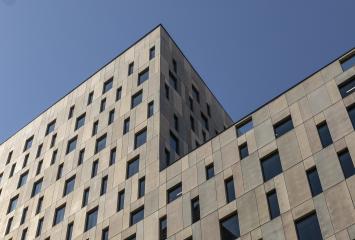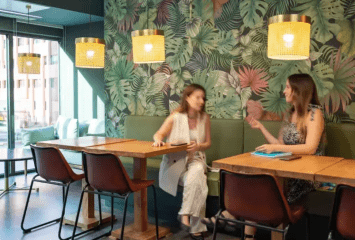Life Cycle Analysis: commitment number 5 of Colonial's Sustainability Decalogue
The first four commitments of our Sustainability Decalogue - reducing energy intensity, reducing carbon footprint, pursuing energy certificates and seeking maximum sustainability certifications - play a key role in Colonial's predominantly sustainable nature. They are a fundamental part of our efforts to create truly environmentally friendly office buildings. However, all of these goals, and the actions towards them, would be blind moves without a thorough analysis of a building's environmental impact throughout its life cycle.
Measures taken for the life cycle analysis of new projects and acquisitions
Life cycle analysis, often referred to as LCA, is a very important tool in all our projects, whether they are new acquisitions for refurbishment or new construction from scratch. Specifically, this analysis allows us to discover the environmental impact of the different phases of a building, from its construction to its demolition and through its operational phase, in order to find and implement the sustainability improvement solutions that are possible. In our case, this detailed study is carried out in accordance with the ISO14044 standard of 2006 and has served as the basis for the energy and material optimization of all our real estate assets.
More specifically, our life cycle analysis is materialized in a series of minor analyses of great importance such as the analysis of possible environmental liabilities, the analysis of energy efficiency potential and therefore the possibility of obtaining certification, the analysis of building orientation, the analysis of the present and future sustainability of construction materials, the analysis of both carbon footprint and resource consumption, the analysis of management systems, the analysis of the presence or installation of renewable energy sources, the analysis of low-impact construction solutions or the analysis of pollution, among others.
All these analyses, however, fall within the different phases of the asset's life cycle, which are acquisition, construction and renovation, renovation and remodeling, management of properties in operation and repositioning or sale of the property. In this way, our quest for decarbonization and sustainability in general is not limited to the construction phase, but extends its influence to the entire value chain of our buildings. A comprehensive intervention for which we rely on the design teams, suppliers, contractors, maintainers and technical managers. The analysis and the subsequent strategic plan are a collective task.
Current status of life cycle analysis at Colonial
Currently, and for a long time now, at Colonial we have been carrying out this exhaustive analysis in all new building acquisitions, in all building renovations and in all building rehabilitations. This allows us not only to identify areas for improvement but also to highlight the high degree of sustainability of our assets in order to communicate this to potential clients. At the end of the day, having truly green offices provides many benefits to companies beyond the selfless contribution to the fight against climate change, such as an improved business reputation or a greater attraction and retention of working talent.
Buildings in Colonial's catalog that exemplify this principle
As we have already mentioned, all of Colonial's buildings have undergone a life cycle analysis. In this sense, they all exemplify this principle to perfection. But let's look at one example. Like the Cedro asset, acquired in 2018. For its subsequent optimization, we meticulously analyzed the possibility of the use of low-carbon materials, the installation of a DALI system for the management and control of heating, the installation of a polarization system that would increase energy efficiency or the use of plants with low water requirements. Also its carbon footprint. And the impact of its overall water consumption.
As a result, the Cedro building, located in Madrid, presents a maximum degree of sustainability since its refurbished reopening in 2021. Among other solutions, it incorporates a BMS system for measuring and consulting consumption in real time, a lighting management system and a system for controlling air conditions that guarantees ventilation 30% above RITE requirements. In short, real estate sustainability stems from creativity, commitment and investment in material and energy solutions, but all of this in turn depends on a detailed analysis that makes it possible to make the right decisions that lead to the highest environmental objectives. From life cycle analysis.

